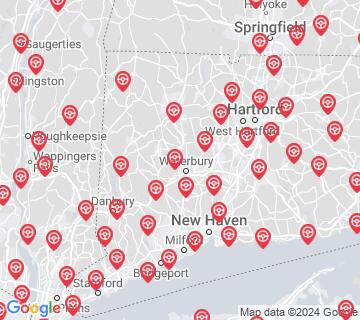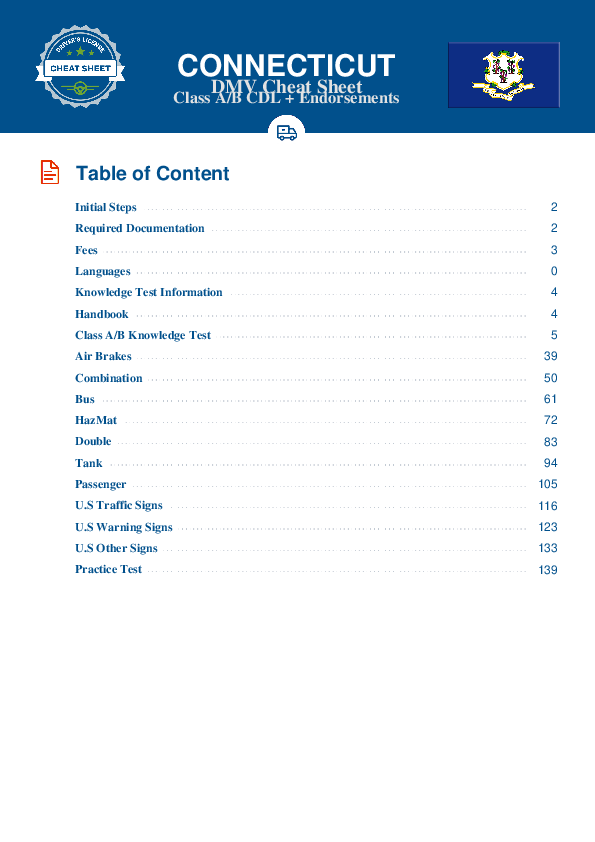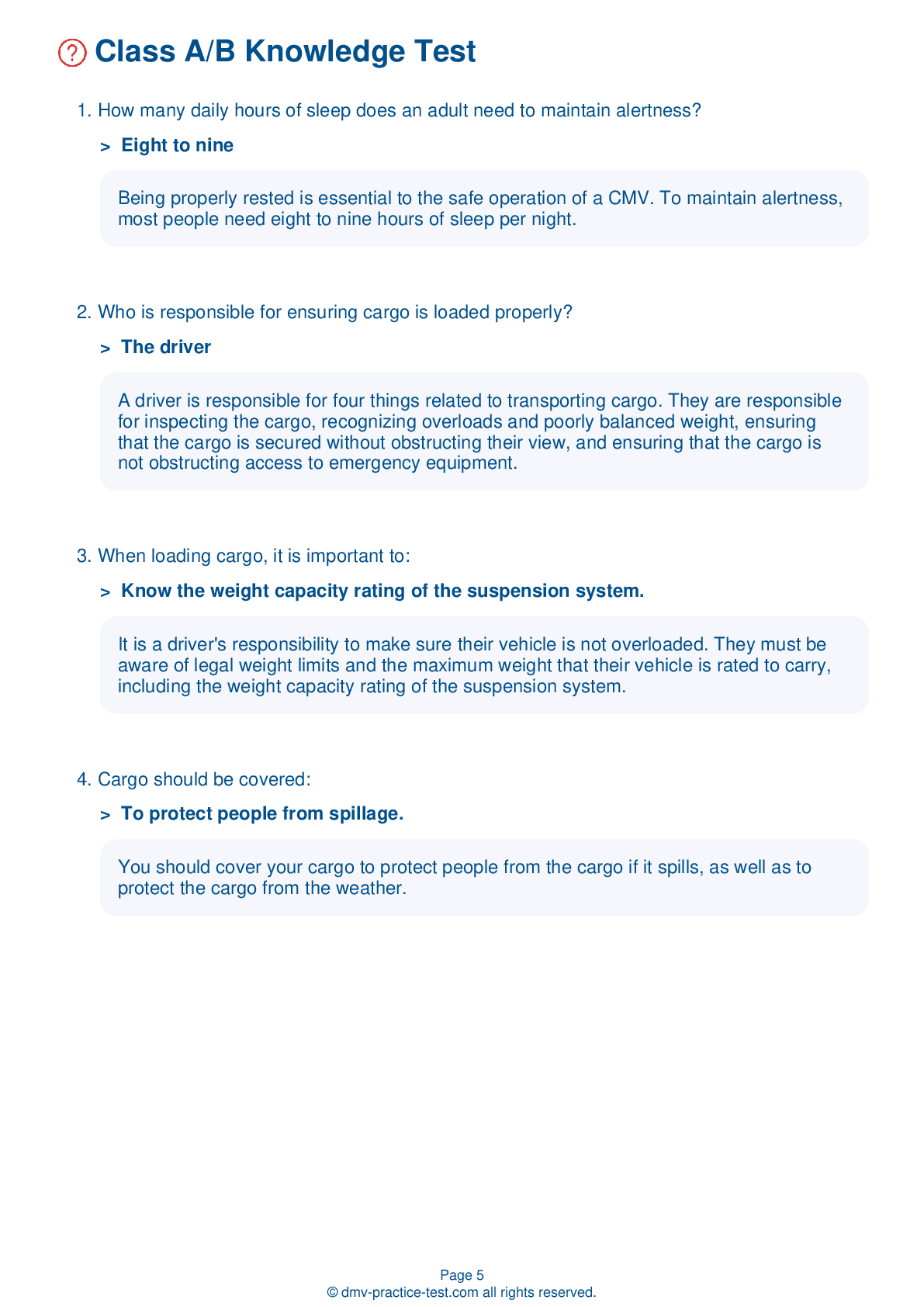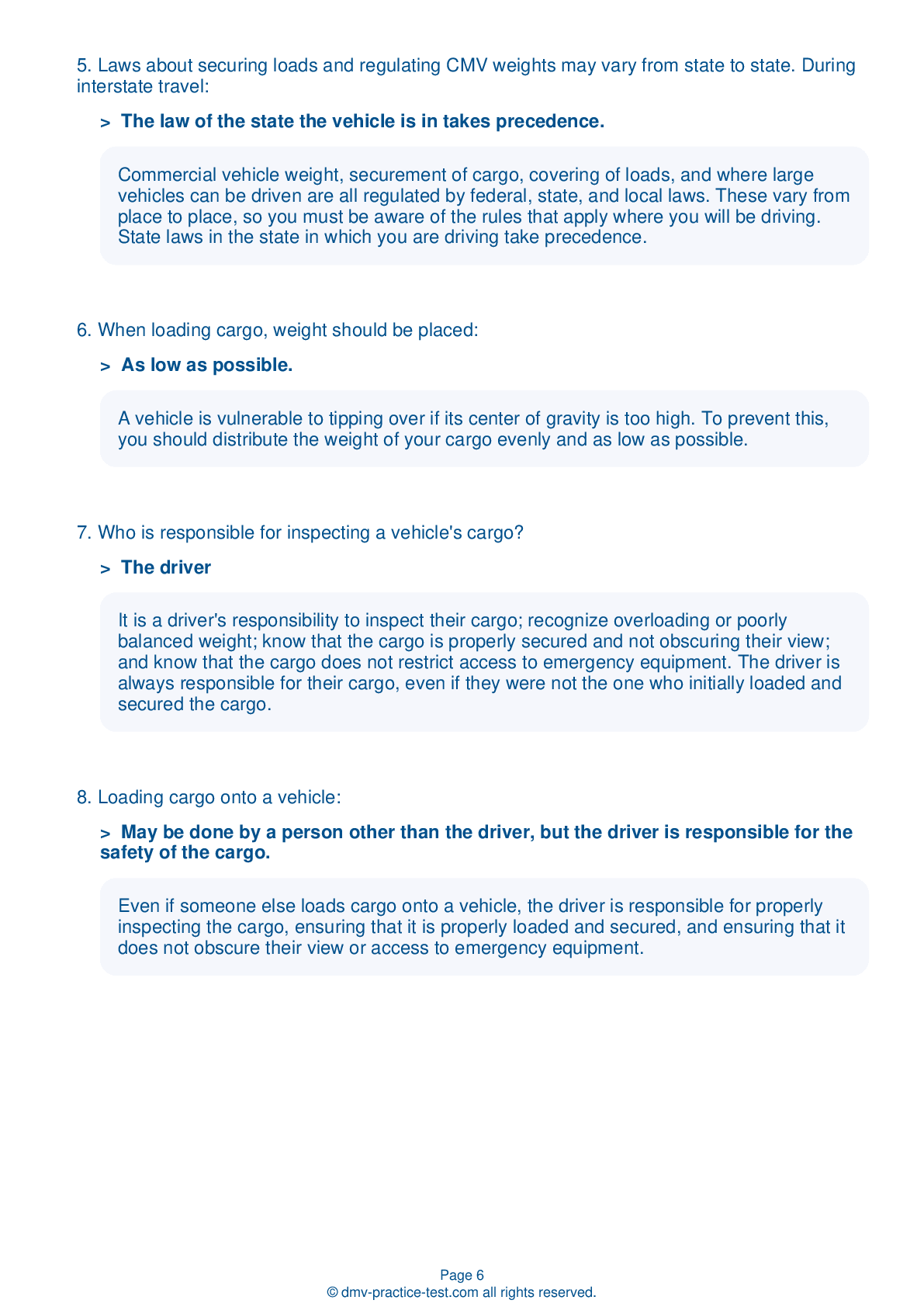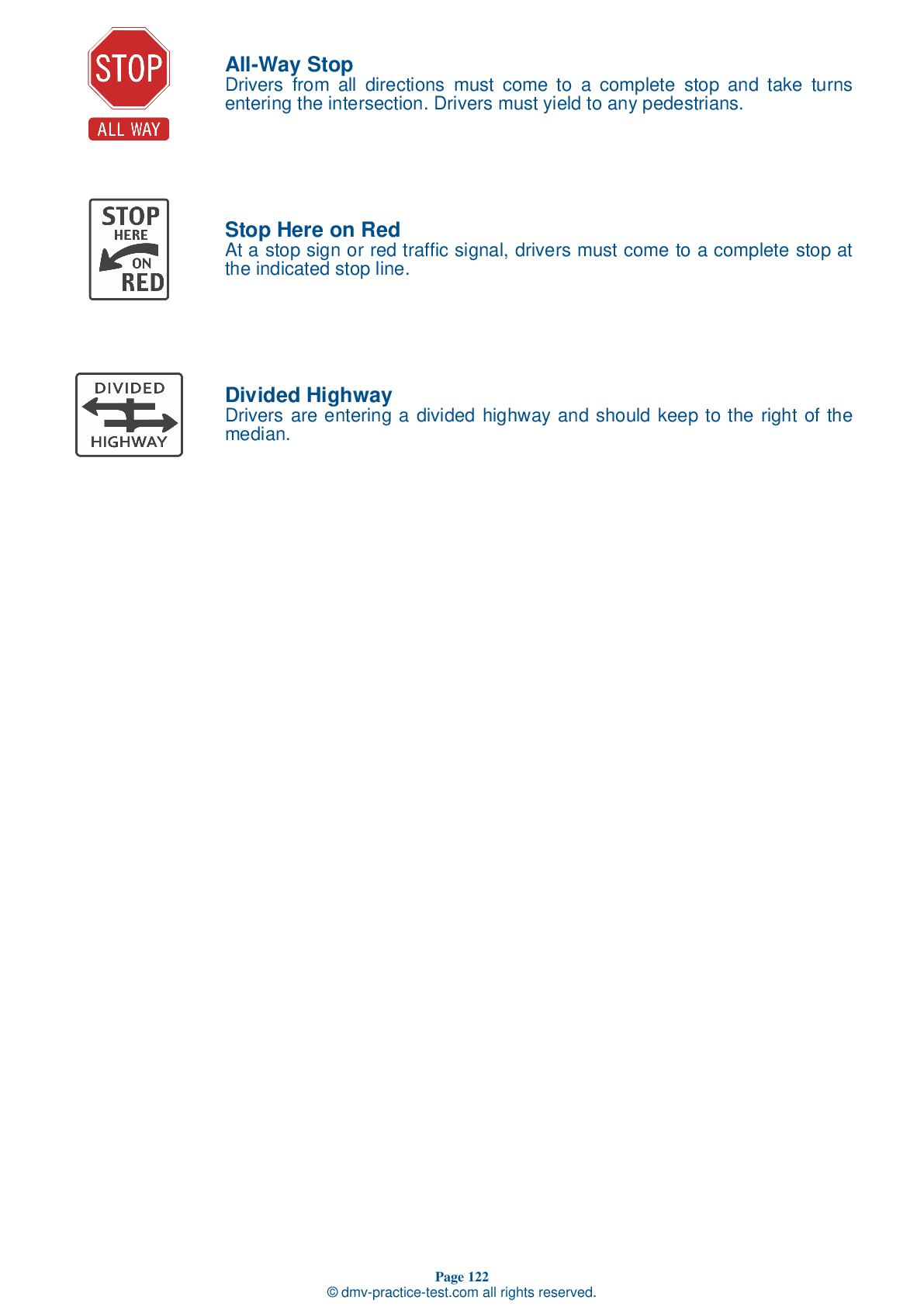Passenger #1
Passenger Endorsement | Connecticut 2025 #1 Page 2 of 3
Train for FREE with our Connecticut CDL passenger endorsement practice test online. The official exam test consists of several obligatory parts, with all of them checking your knowledge of different blocks of road rules. If you need to obtain a CT DMV passenger endorsement in 2025, practice as much as possible. Free sample tests published on our website will help you check and improve your knowledge and boost your grades. Please bear in mind that DMV requirements for issuing a CDL permit with passenger endorsement may vary from state to state.
20
16
20
8 . When conducting a vehicle inspection, you must show each of the following, except:
That the oil pressure gauge comes on when brakes are used.
When checking the oil pressure gauge as part of a vehicle inspection test, you must ensure that it is working. The gauge should show increasing or normal oil pressure, or the oil pressure warning light should turn off. If equipped with one, the oil temperature gauge should begin a gradual rise to the normal operating range.
9 . When exiting a vehicle, it is important to maintain ____ with your vehicle at all times.
As you exit your vehicle during the basic vehicle control skills test, you must face the vehicle and maintain three points of contact at all times. If your testing vehicle is a bus, you must maintain contact with the handrail. Exiting the vehicle incorrectly may result in automatic failure of the basic control skills test.
10 . During the basic vehicle control skills test:
Excessive pull-ups are acceptable in the opinions of some test administrators.
During the basic vehicle control skills test, a pull-up will be scored any time an applicant stops and pulls forward to gain a better position. Stopping without changing direction will not. An excessive number of pull-ups will count as errors.
11 . If a vehicle is equipped with an Anti-Lock Braking System (ABS), when the vehicle is started:
After starting the engine of a vehicle equipped with an Anti-Lock Braking System (ABS), the indicator light should come on and then turn off. If the light stays on, something is wrong with the ABS.
12 . When approaching a railroad crossing, you should:
Look to see if nearby plants are moving from the breeze created by a passing train
As a precaution, you should always approach a railroad crossing under the assumption that a train is coming. Do not rely only on signals or your hearing to indicate that a train is approaching.
13 . When approaching a railroad crossing while operating a bus, you should:
A bus driver should stop between 15 and 50 feet before any railroad crossing and check for trains before proceeding across the tracks. The driver may open the door to improve their ability to see or hear any approaching trains.
14 . If an approaching driver is using their high beam headlights, you should:
Pull to the side of the road until the vehicle has passed.
If a vehicle is coming toward you while using its high beam headlights, glance away from the headlights and toward the right side of the road until the vehicle has passed. This will keep you from being blinded by the lights.
Search the best driving school in your neighbourhood
2025 Connecticut | Frequently Asked Questions
To acquire a CDL Passenger endorsement in Connecticut, you must first have a valid Connecticut CDL. Next, you must pass the Passenger Transport Test. You will need to study sections 2, 4, 5 and 12 of the CDL manual. After passing the test, you can apply for the endorsement at your local DMV office.
To obtain a CDL Passenger license in Connecticut, you must be at least 21 years old, possess a valid Connecticut CDL, and pass the Passenger Transport Test. This test covers topics like vehicle inspection, loading/unloading passengers, and emergency procedures. After passing the test, you apply for the endorsement at your local DMV office.
Yes, specific training is needed for a CDL Passenger endorsement in Connecticut. This includes passing a general knowledge test, a passenger transport test, and a skills test in the vehicle type you'll be driving. While not mandatory, experience driving large vehicles can be beneficial as it may help you pass these tests.
Yes, to secure a CDL Passenger endorsement in Connecticut, you must pass the Passenger Transport Test. This written test covers topics such as inspecting your vehicle, loading and unloading passengers, on-road driving, and emergency procedures. You'll need to study sections 2, 4, 5 and 12 of the CDL manual to prepare for it.
During the CDL Passenger endorsement assessment, you'll need to demonstrate skills like vehicle inspection, proper passenger loading/unloading, safe operation of the vehicle, use of emergency exits, and executing proper responses to emergency situations. The aim is to ensure you can safely transport passengers under various conditions.
No, in Connecticut, you cannot legally transport passengers in a commercial vehicle without a valid CDL Passenger endorsement. This endorsement is required for drivers of vehicles designed to carry 16 or more passengers, including the driver. Driving without the proper endorsement can lead to penalties, fines, or suspension of your CDL.
Yes, you can add the CDL Passenger endorsement to your existing Commercial Driver's License (CDL). You do not need to apply for a new license. However, you will need to pass the Passenger Transport Test and a skills test in the vehicle type you will be driving. Consult your local DMV for specific procedures.
Yes, there are restrictions for drivers with a CDL Passenger endorsement in Connecticut. They must comply with federal and state regulations regarding hours of service, not drive under the influence of alcohol or drugs, and must maintain a clean driving record. Additionally, they must ensure passenger safety and comply with vehicle capacity limits. Failure to adhere to these can lead to penalties or suspension of the endorsement.
Yes, in Connecticut, to acquire a CDL Passenger endorsement, you must be at least 21 years old. This is a federal requirement to drive a commercial vehicle across state lines. However, if you plan to operate only within Connecticut, you can get a CDL at age 18. Always remember to check with your local DMV for the most accurate information.
With a CDL Passenger endorsement in Connecticut, you are eligible to operate vehicles that are designed to transport 16 or more passengers, including the driver. This includes buses, shuttle vans, and large limousines. However, school buses require an additional School Bus endorsement. Always ensure you have the correct endorsements for the vehicle you're operating.
